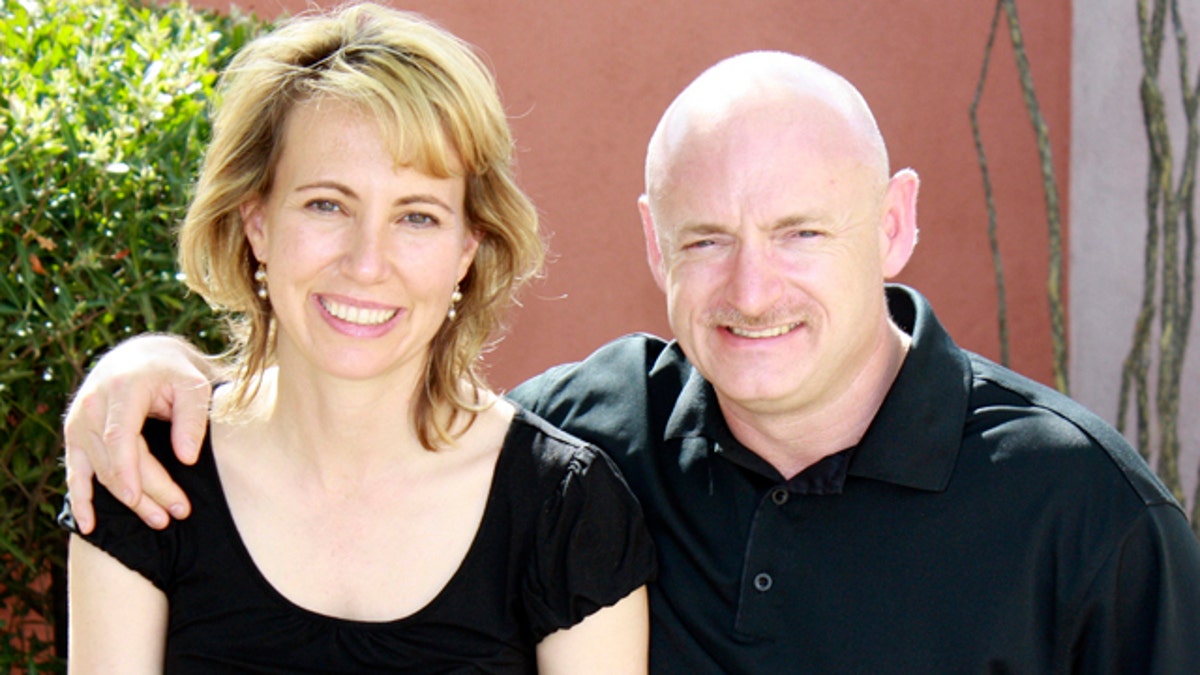
FILE: Rep. Gabrielle Giffords with her husband, NASA astronaut Mark Kelly, before the January shooting. (AP Photo/Office of Rep. Gabrielle Giffords)
HOUSTON -- Doctors repaired Gabrielle Giffords' skull, the latest milestone in her recovery from an assassination attempt and a procedure that experts say will improve her quality of life.
A gunman shot her in the head more than four months ago in Tucson, Arizona, and doctors had to remove a portion of her skull to relieve pressure on her brain.
On Wednesday, they put a plastic implant in place to fully cover her brain, according to a statement from TIRR Memorial Hermann hospital. The hospital planned a briefing on Thursday to give an update on her medical condition and discuss the next steps in her rehabilitation.
Giffords is "recovering well after her surgery today," a hospital statement said.
Giffords' astronaut husband, Mark Kelly, is orbiting Earth on space shuttle Endeavour and is getting updates on her condition, NASA said.
Doctors familiar with the procedure and not involved in her care said it was fairly routine, will significantly improve her quality of life and help her feel more normal.
"It's a very significant milestone in the recovery," said Dr. Robert Friedlander, chair of neurosurgery at the University of Pittsburgh Medical Center.
The implant -- or bone flap as doctors call it -- will protect the brain and the skull, Friedlander said. It will allow Giffords to freely move about without her helmet, adorned with the Arizona state flag, for the first time since she began therapy in late January.
In addition, it makes therapy easier because the helmet can be uncomfortable and cumbersome, Friedlander said.
Dr. Reid Thompson, chairman of neurological surgery at Vanderbilt University Medical Center in Nashville, said there is also an important psychological element to removing the helmet.
"They look in the mirror and they don't see someone who's been injured or shot. They look normal," Thompson said.
The flap itself is custom made, manufactured to slip perfectly into place based on a three-dimensional model of the skull built from a CT image, Thompson said. Usually, the implant is made of clear or white plastic, and tightened into place with titanium screws.
Bill Kolter, a spokesman for Biomet, the manufacturer of Gifffords' implants, said the material is porous to allow bone to fuse to the edges of the object in the future.
"She'll look like everyone and when walking down the street you wouldn't know." Thompson said.
Even the shunt -- or tube -- placed in Giffords' head to drain excess spinal fluids from her brain will not ruin the image, Friedlander said.
That tube, which is permanent, is generally placed in the front of the head and is no more than a small bulge under the skin, usually hidden by hair. The tube drains the fluid into the abdomen.
"Externally ... once the swelling is gone, her head will be nice and round the way she was beforehand," Friedlander said.
From the start, doctors have marveled not only at Giffords survival, but also at her recovery.
Within weeks of arriving at TIRR Memorial Hospital in late January, Giffords' family and staff reported she could speak a few words, then sing some songs and string together short sentences. By March, she was able to walk with assistance, according to her doctors, and her personality was shining through.
On Monday, according to her staff, she said "good stuff, good stuff" while watching her husband rocket into space.
Still, doctors caution that she has a long recovery ahead of her and have repeatedly talked about reaching a new "normal."
Wednesday's operation is considered fairly routine, though there is a 1 percent chance of infection or bleeding, Thompson said.
Infection, normally resulting from the introduction of a foreign body, would not be apparent for a few weeks, but bleeding could occur in surgery when doctors lift the skin to reach the open area, Friedlander added.
Yet doctors say it wasn't necessary to have Kelly on Earth to go ahead with the surgery.
Not only can closing the hole alleviate some of the headaches associated with brain injuries, it helps prevent any future injury, Thompson said.
The surgery itself is only about 90 minutes long. From start to finish, including recovery from anesthesia and pre-operating preparations, the procedure will take no more than three hours, the doctors said.
And once it's over, the real countdown for Giffords' release will begin, they added.
"That may actually be quite soon," Thompson said.




